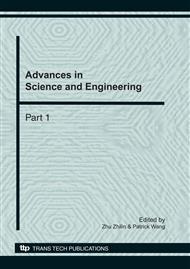p.835
p.839
p.847
p.852
p.858
p.866
p.873
p.877
p.881
Research on Control Strategies and Optimal Signal Timing for Traffic Congestion Based on Prediction
Abstract:
Designing effective control strategies to traffic jams is an important measure to solve the problem of traffic jams in urban traffic network. Most of the green ratio models clear off crowded traffic flow synchronously at each approach of signal intersection in oversaturated traffic, but ignore the difference of traffic flows in different traffic state, and lead to the queue becoming longer and longer at oversaturated signal intersection. In this paper, the cell transmission model is applied to the propagation of traffic jams, the formation and dissipation of traffic jams in urban traffic network. A new method for predicting the traffic states is proposed, and the future traffic states can be achieved, according to the spatial structure of traffic jam propagation. We use an idea of traffic priority as an management measure to design the optimal green ratio in advance, and the improved green ratio model can realize the goal of preventing traffic congestion and clearing off traffic blockage quickly. Simulation results show that the proposed strategies with appropriate application can effectively control jam dissipation and prevent traffic congestion formation.
Info:
Periodical:
Pages:
858-865
Citation:
Online since:
November 2010
Authors:
Price:
Сopyright:
© 2011 Trans Tech Publications Ltd. All Rights Reserved
Share:
Citation:


